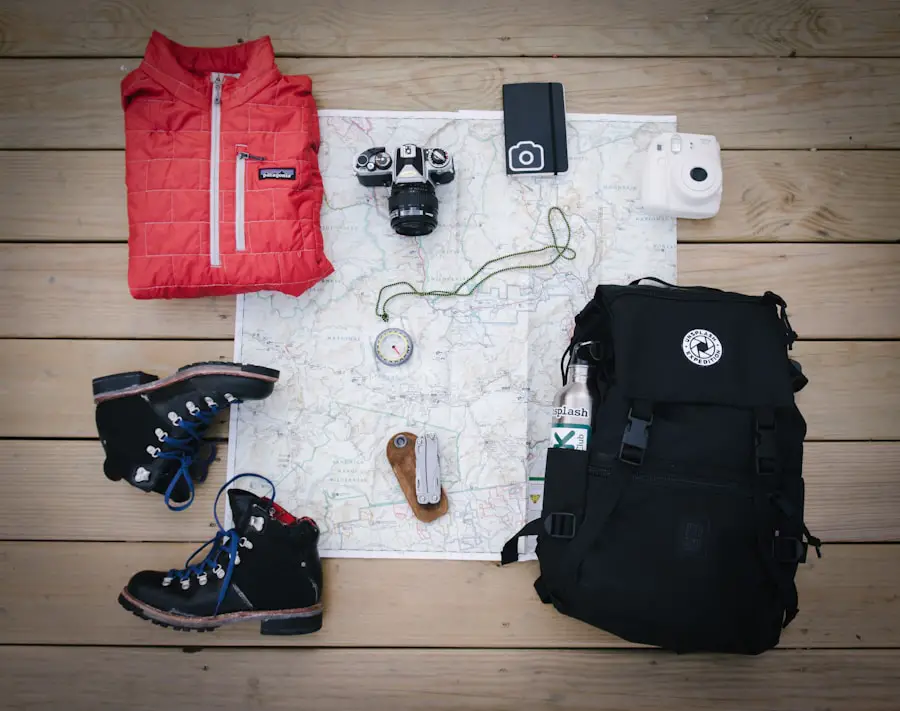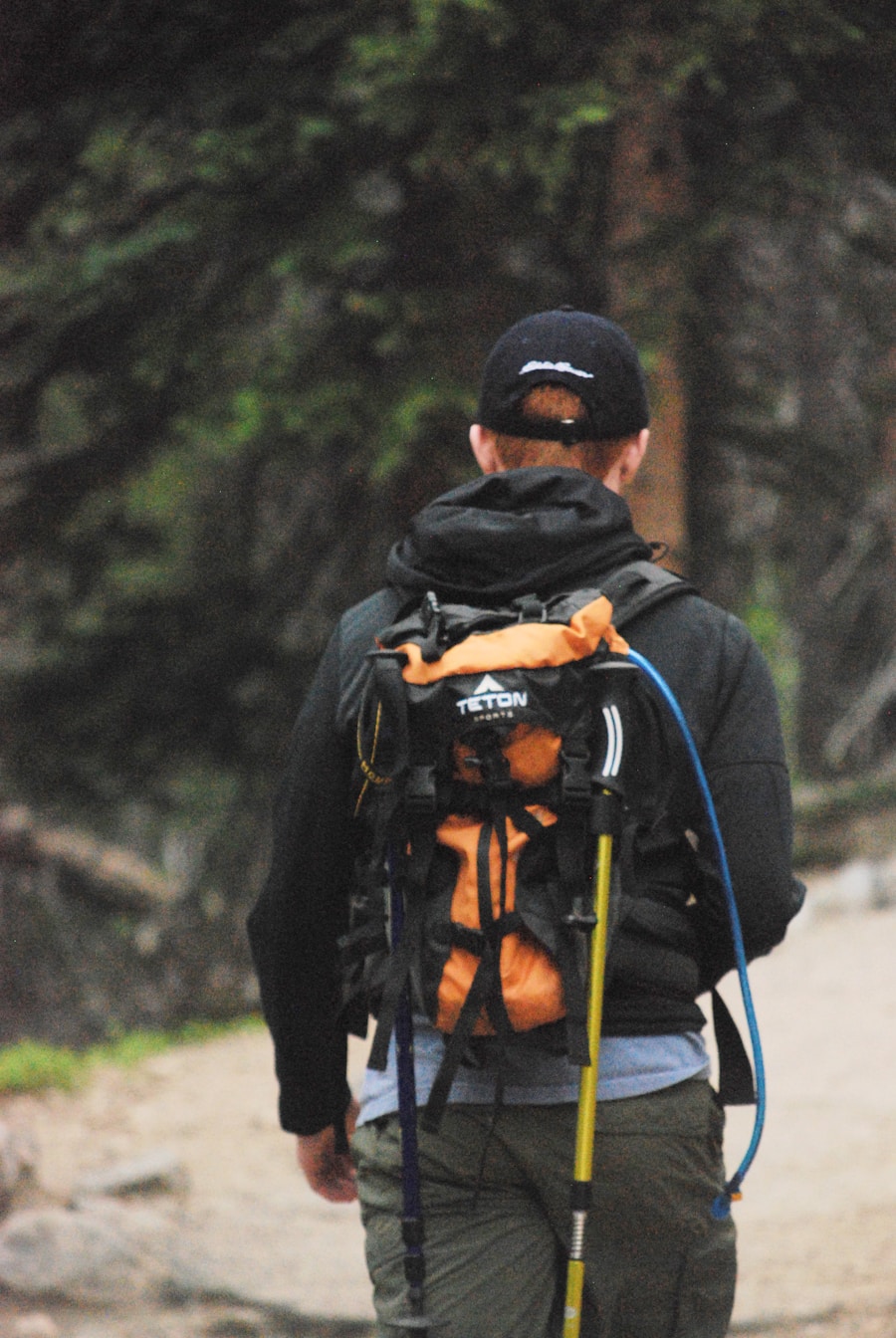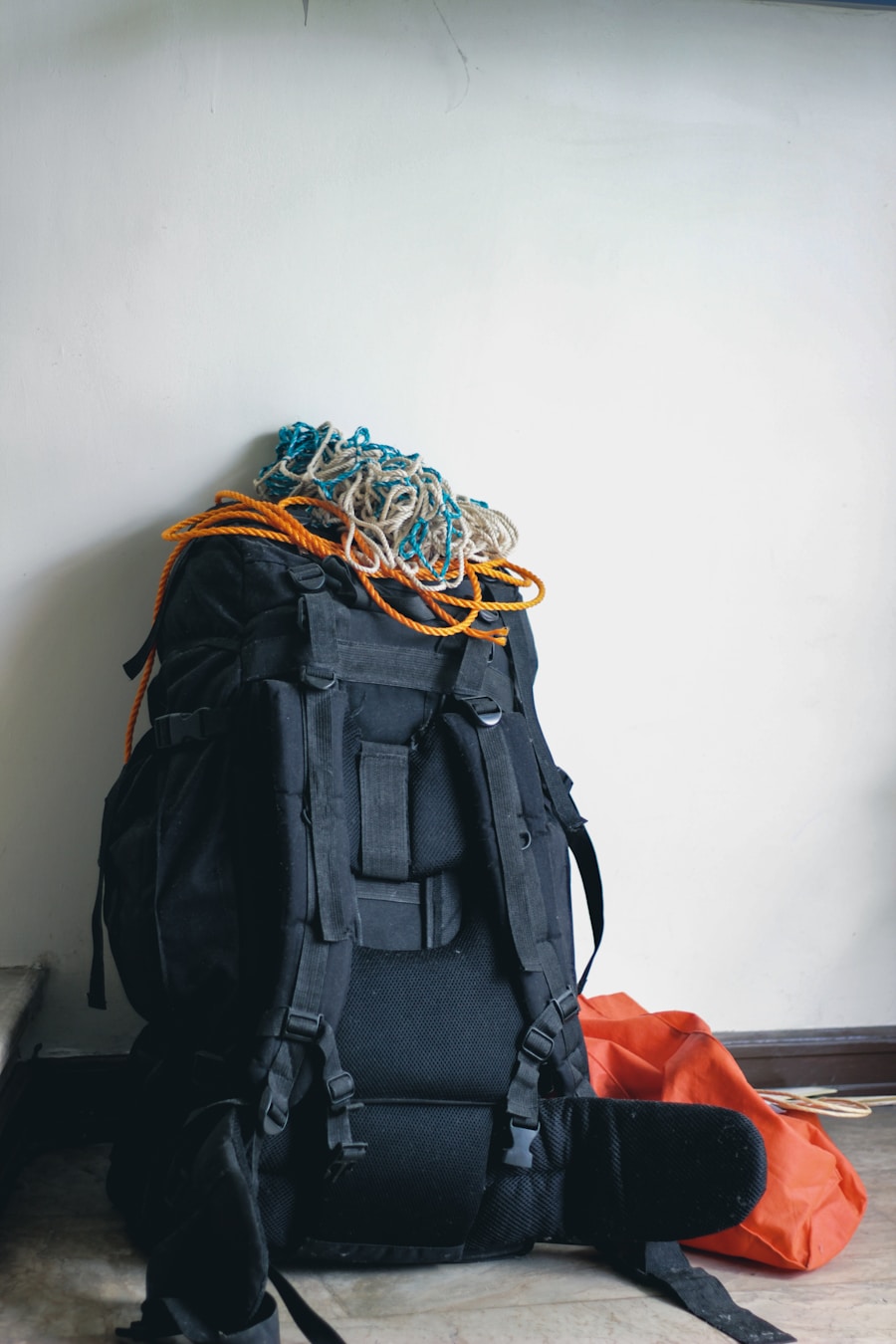Hiking backpacks are essential tools for outdoor enthusiasts, designed to carry the necessary gear for day hikes or extended treks. At their core, these backpacks are engineered to distribute weight evenly across the body, allowing hikers to traverse various terrains without excessive strain. The anatomy of a hiking backpack typically includes a main compartment, multiple pockets, and adjustable straps.
The main compartment is where the bulk of your gear resides, while side pockets can hold water bottles or quick-access items like snacks. Additionally, many backpacks feature a top lid that can be used for extra storage or to secure items like a rain cover. The materials used in hiking backpacks are also crucial to their functionality.
Most are constructed from durable, weather-resistant fabrics that can withstand the rigors of outdoor use. Nylon and polyester are common choices due to their lightweight nature and resistance to abrasions. Furthermore, many modern backpacks incorporate features such as hydration reservoirs, which allow hikers to drink water on the go without fumbling for a bottle.
Understanding these basic components and features is vital for anyone looking to invest in a hiking backpack that meets their specific needs.
Key Takeaways
- Hiking backpacks come in different sizes and styles, designed for various types of hikes and carrying capacities.
- Consider factors such as capacity, fit, and features when choosing the right backpack for your hike.
- Organize your gear by weight and frequency of use to pack efficiently and access items easily.
- Pack your backpack with heavier items closer to your back and lighter items towards the outside for better balance and comfort.
- Essential items for safety and survival include navigation tools, first aid kit, extra clothing, food, water, and emergency shelter.
Choosing the Right Backpack for Your Hike
Day Hikes: Small but Mighty
For day hikes, a capacity of 20 to 30 liters is often sufficient. These packs are lightweight and designed to carry essentials like water, snacks, and a first-aid kit.
Multi-Day Hikes: Room for More
Conversely, multi-day hikes require larger backpacks ranging from 50 to 70 liters, which can accommodate sleeping bags, cooking gear, and extra clothing.
A Comfortable Fit is Key
Another critical aspect to consider is the fit of the backpack. A well-fitted backpack should sit comfortably on your back without causing pressure points or discomfort. Many brands offer various sizes tailored to different torso lengths, ensuring that the pack aligns with your body’s natural shape. Additionally, adjustable features such as belts and sternum straps can enhance fit and stability, allowing for a more enjoyable hiking experience. Trying on different models and adjusting them while wearing appropriate layers can help you find the perfect match for your hiking style.
Organizing Your Gear for Efficient Packing

Efficient packing is an art that can significantly enhance your hiking experience. The way you organize your gear within your backpack can affect not only how easily you access items but also how comfortable the pack feels while you’re on the move. A common strategy is to pack heavier items closer to your back and higher up in the pack.
This positioning helps maintain balance and reduces strain on your lower back. For instance, if you’re carrying a tent or cooking equipment, placing these items against your back allows for better weight distribution. Additionally, utilizing packing cubes or dry bags can streamline organization within your backpack.
These containers help separate different categories of gear—such as clothing, food, and cooking supplies—making it easier to locate specific items without rummaging through your entire pack. Furthermore, consider using the outer pockets for items you may need quick access to during your hike, such as a map, sunscreen, or snacks. This thoughtful organization not only saves time but also enhances your overall efficiency on the trail.
Packing Your Backpack for Comfort and Balance
| Item | Weight (lbs) | Location in Backpack |
|---|---|---|
| Sleeping Bag | 3.5 | Bottom of backpack |
| Tent | 4.2 | Center of backpack |
| Clothing | 5.0 | Top of backpack |
| Food and Cooking Gear | 6.8 | Outside pockets for easy access |
| Water and Hydration System | 4.0 | Side pockets for balance |
When it comes to packing your backpack, comfort and balance are paramount. A well-packed backpack should feel stable and secure against your body while allowing for freedom of movement. To achieve this balance, start by placing heavier items at the bottom of the pack.
This lowers your center of gravity and helps prevent tipping while walking on uneven terrain. Next, distribute lighter items around the heavier ones to create a balanced load that doesn’t pull you in one direction. In addition to weight distribution, consider how you pack your gear in relation to how often you’ll need access to it.
Items that you’ll need frequently should be packed in easily accessible pockets or at the top of the main compartment. For example, if you anticipate needing a rain jacket during your hike, it should be readily available without having to dig through layers of gear. By prioritizing comfort and balance in your packing strategy, you can enhance your overall hiking experience and reduce fatigue over long distances.
Essential Items to Pack for Safety and Survival
Safety should always be a top priority when heading into the wilderness, and packing essential survival items is crucial for any hike. A well-stocked first-aid kit is non-negotiable; it should include bandages, antiseptic wipes, pain relievers, and any personal medications you may need. Additionally, carrying a multi-tool or knife can be invaluable for various situations, from preparing food to making emergency repairs.
Another critical component of safety is navigation equipment. A map and compass are essential tools that can help you stay oriented in unfamiliar terrain. While many hikers rely on GPS devices or smartphone apps for navigation, having traditional tools ensures that you can find your way even if technology fails.
Furthermore, packing extra food and water is vital; dehydration and hunger can quickly lead to fatigue or disorientation on the trail. By preparing adequately with these essential items, you can ensure a safer hiking experience.
Tips for Adjusting and Fitting Your Backpack

Final Check Before Hitting the Trail
Finally, take the time to walk around with your fully packed backpack before hitting the trail; this allows you to make any necessary adjustments based on how it feels during movement.
Maximizing Space and Weight Distribution
Maximizing space within your backpack while ensuring proper weight distribution is key to an enjoyable hiking experience. One effective method is to utilize every available pocket and compartment efficiently. For instance, use side pockets for water bottles or trekking poles while reserving the main compartment for bulkier items like clothing or sleeping gear.
Additionally, consider using compression sacks for clothing; these bags reduce volume by squeezing out excess air, allowing you to fit more into your pack without adding unnecessary weight. Weight distribution is equally important; aim to keep heavier items close to your back and centered within the pack. This positioning helps maintain balance and reduces strain on your body as you navigate uneven terrain.
If you find yourself carrying extra gear that isn’t essential for your hike, consider leaving it behind or sharing it with fellow hikers if possible. By being mindful of both space and weight distribution, you can enhance comfort and efficiency on the trail.
Diagram of a Well-Packed Hiking Backpack
While words can describe how to pack a hiking backpack effectively, visual aids can provide clarity that enhances understanding. A well-packed hiking backpack typically features a clear organization system: heavier items like tents or cooking gear are positioned at the bottom against the back panel; clothing is rolled tightly and placed above these items; food supplies are stored in accessible outer pockets; and frequently used items like maps or snacks are kept at the top of the main compartment. In addition to this organization strategy, a diagram illustrating these principles can serve as an excellent reference point for hikers preparing for their adventures.
Such diagrams often highlight key areas within the backpack where specific types of gear should be placed—showing how proper packing techniques contribute not only to comfort but also to safety on the trail. By combining visual representation with practical advice on packing techniques, hikers can better prepare themselves for successful outings in nature’s vast playgrounds.
If you’re planning a hiking trip and need to pack your backpack efficiently, you may want to check out this helpful article on 5 must-have universal travel adapters. This article provides useful tips on essential items to bring along on your adventures, including adapters that can come in handy when traveling to different countries. It’s always important to be prepared and pack smartly for any outdoor excursion.
Love travel? Join Our Facebook Community
FAQs
What are the essential items to pack in a hiking backpack?
Some essential items to pack in a hiking backpack include a map and compass, water and water purification system, food and snacks, extra clothing layers, a first aid kit, a multi-tool or knife, a headlamp or flashlight, a fire starter, and a shelter such as a tent or tarp.
How should I distribute the weight in my hiking backpack?
It’s important to distribute the weight in your hiking backpack evenly to maintain balance and reduce strain on your body. Heavier items should be packed closer to your back and towards the middle of the backpack, while lighter items can be placed towards the outside and at the top.
What is the best way to pack a hiking backpack for comfort and efficiency?
The best way to pack a hiking backpack for comfort and efficiency is to organize your gear by frequency of use and pack heavier items lower and closer to your back. Utilize the compartments and pockets of the backpack to keep items organized and easily accessible.
How do I adjust the straps and hip belt of a hiking backpack for a proper fit?
To adjust the straps and hip belt of a hiking backpack for a proper fit, start by loosening all the straps and putting the backpack on. Then, tighten the hip belt first, making sure it sits on your hips and not your waist. Next, adjust the shoulder straps so they are snug but not too tight, and finally adjust the load lifters and sternum strap for added stability.
What are some tips for packing a hiking backpack for a multi-day trip?
When packing a hiking backpack for a multi-day trip, consider the duration of the trip and pack enough food, water, and clothing for each day. Prioritize lightweight and compact gear, and consider bringing a larger backpack if necessary. It’s also important to pack a sleeping bag, sleeping pad, and any additional camping gear needed for overnight stays.
